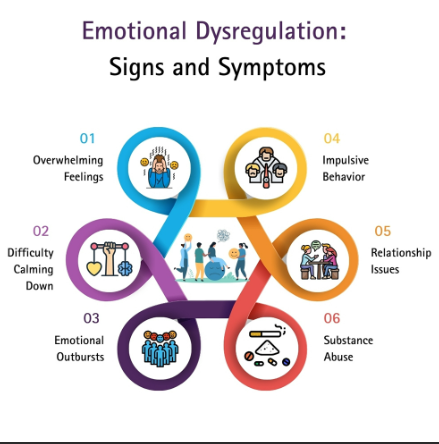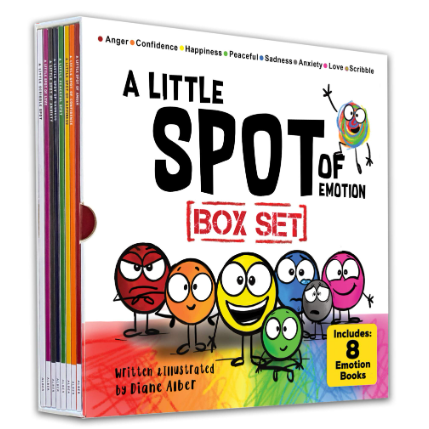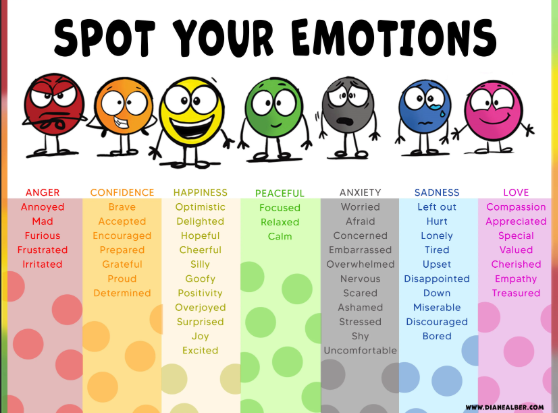What is emotional regulation?
In simple terms, it is the ability to have control over one’s emotions. However, to be able to do this, one must have the executive functioning skills to work through it, including the ability to identify what they are feeling and identify the strategies for how to work through it. Small children are expected to have a hard time with regulation, however, once they get to an older age, it is socially unacceptable. However, if a child is never taught the proper tools to work through their emotions, then they will likely have a hard time regulating their emotions whether that come out as outbursts, or other emotions. Everyone also develops these skills at different times depending on their environment, genetics and temperament. This of course does not count if a child is hungry, tired, has mental discrepancies or is deprived of any other needs for survival.

Who may have a hard time with emotional regulation?
Emotional regulation is hard for everyone, especially when people are learning, or have never been taught and need to navigate it themselves. People with ADHD, ASD, Mood disorders, Personality disorders, Anxiety, Depression, etc. may all have a harder time regulating their emotions due to the characteristics of the diagnoses making it harder to understand their own body.
What are strategies that can be used?
There is a plethora of strategies that can help regulate emotions. These may include breathing exercises, engaging in sensory equipment, 5 senses strategy, zones of regulation (talked about in an earlier post), drawing/painting, journaling, little spot of emotions series, etc.
What is the little spot of emotion series?
Little spot of emotions was created as a strategy to empower children with the words to describe how they are feeling. Providing children with the vocabulary to properly communicate their feelings is key to helping them work through their emotions and reach a more regulated state when dysregulated. There are books on each emotion that thoroughly explain each emotion and situations that may arise with each emotion. There is also a character called the feeling detective, and this character shows up in the books to help note all details of each emotion. The collection of books does not just stop at feelings; there are also situational books such as making friends or leaning in the classroom. In addition, there are also games associated with the collection such as feelings island, a little spot mix and match, a little spot get to know me, in addition to a book of activities to engage children in.

What does each spot mean?
- Scribble: Tangled feelings: Tangled emotions can cause confusion and could lead to big emotions that can get out of control. Working toward the vocabulary to identify emotions and working with coping skills can help the child gain control of their feelings.
- Red: Anger/Frustration: This is a challenging emotion and can quickly get out of control. This is often hard for even parents to control which makes it more challenging. Breathing and coping strategies can often help guide the child through.
- Blue: Sadness/Boredom: A powerful and important emotion that encourages kindness and empathy.
- Grey: Worry/Anxiety: A challenging emotion to navigate, however, important to work through and understand. Breathing and other coping strategies can often help the child navigate through.
- Orange: Confidence/Belonging: Understanding the importance of affirmations and building oneself up is very important for a child’s self-esteem and self-efficacy. Confidence also helps to manage anxiety.
- Yellow: Happiness/Flexible thinking: It is important to give your child chances to grow their mindset towards a happy one. Being able to use flexible thinking can help set a child up for success and optimistic thinking.
- Pink: Love/Empathy: It is important for a child to feel loved, to be able to identify how it is expressed to them and how they express it, not only to others, but to themselves as well.
- Green: Peaceful/Calm: Understanding that children do not have meltdowns over nothing, they lack the tools to regulate. Finding the calm spot through big emotions is needed to be able to participate in everyday life.
- Purple: Learning: Being regulated enough to learn. If a child is dysregulated, they are not going to be in the space to learn.

In conclusion, emotional regulation is a tricky topic to tackle, especially if as a parent you have a hard time with it as well. Implementing strategies are vital to maintain an emotionally regulated child that is fully able to engage in their everyday life.
References:
Alber, D. (n.d.). Parent’s Take Home Guide to a Little Spot. Weebly. https://bkspto.weebly.com/uploads/6/0/9/6/60965329/a_little_spot_series_parent_guide_1.pdf
Emotional dysregulation: How to feel about managing feelings. Cleveland Clinic. (2025, May 13). https://my.clevelandclinic.org/health/symptoms/25065-emotional-dysregulation
Menefee, D. S., Ledoux, T., & Johnston, C. A. (2022, January 12). The importance of emotional regulation in Mental Health. American journal of lifestyle medicine. https://pmc.ncbi.nlm.nih.gov/articles/PMC8848120/
Weir, K. (2023, April). How to Help Kids Understand and Manage Their Emotions. American Psychological Association. https://www.apa.org/topics/parenting/emotion-regulation


